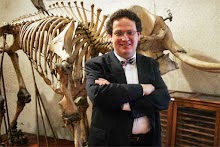 | ||
| Aleiodes gaga (Braconidae). From Butcher, Smith, Sharkey and Quicke (2012), ZooTaxa 3457: 1-232. |
As I said in a recent New to Nature column in The Observer perhaps the best part of a recent paper by Butcher et al. in which nearly 180 new species of Braconidae of the genus Aleiodes are described from Thailand is that it ends the charade that advocates of DNA barcoding see it only as a new species identification tool and not a process for discovering new species. Of course the web page banner for the Canadian Centre for DNA Barcoding already blew their cover with its proud slogan: "Advancing species identification and discovery." One would think that they seriously believe that species are just sitting there waiting to be recognized, that species are nothing more than arbitrary bits of more or less continuous variation, and that species do not require any cerebral effort, just technology. That traditionally discovered and described species are carefully worded hypotheses based on the comparison of many specimens, often hundreds or thousands, that make generalizations about the distributions of characters that are explicitly and rigorously testable seems not to deter the DNA barcoders from discovering "species" based on slight differences in a fragment of COI.
I do give thanks and credit to Butcher et al. for being explicit and for creating a large dataset that can become a test bed for just how well DNA barcodes do at detecting new species. Even more, they had the good sense and decency to treat their sequence data as characters, naming names as it were and specifying the nucleic acids at particular bases rather than the Canadian Chaos method that just measures distances.
Among their species is one that they named in honour of Lady GaGa. This was a shrewd move and there were thousands of sites returned on a Google search less than 24 hours after my column was printed in London. The authors may have gone gaga for DNA, but at least they have a sense of humor. The GaGa species differs from its nearest relative by just four nucleobases... G-A-G-A.
















